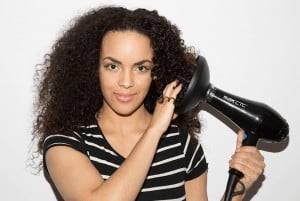Are you struggling with thin hair that lacks volume? The cosmetics and appropriate treatment can make it look better, but sometimes we all need the “wow” effect. In this case, the hair extensions come in handy. If applied skilfully, they can blend in, creating harmony with your own hair.
This way, your hairstyle will have much more volume without using a ton of cosmetic products that only work for a while. That makes it a perfect solution for occasions such as weddings, during which durability is the most significant factor.
Hair extensions are widely available in different sizes and colours. That makes it incredibly easy to adjust your perfect variant. You don’t have to worry about the colour differences – you’ll surely find your match among hundreds (if not thousands) kinds of strands. For a wide variety of hair extensions, check Viola Hair Extensions which offers strands, human hair wigs.
Our tips may help you choose the best hair extensions method for your needs!
Which hair extension method will work for you?
The choice of hair extension solution depends on various factors. First, you should decide whether you want to have your hair done in a professional salon or do it yourself. If you go for a second variant, most likely, you’ll have to stick to clip-on method (unless you have some hairdresser skills). The sew-in, micro-link, and glue methods require much more skills and are a domain of professional salons.
The professional hair extension methods – how do they work?
In the salon, you can opt for sew-in hair extensions. Another option is to go for glue or tape in hair extensions. Some hairdresser salons also introduce micro-link solution that are much more durable. It requires the usage of a micro-sized bead (which is a base for the extensions), and tiny strands are pulled through it. The hair applied this way can survive up to four months. You’ll only need to show up in the salon once or twice during this period in order to reposition your strands. This solution is much more expensive as it consumes a lot of time.
The extensions applied with the sew-in method will last more or less the same as the ones attached on glue or tape – around eight weeks. Note, however, that these solutions are not suitable for thin hair – it may make them weaker and cause some discomfort.
The clip in hair extensions method – when should you choose it?
Clip-on is perfect for those searching for a temporary solution to make their hair look thicker and get some volume. You can apply them yourself at home without glueing or taping. All you need to do is apply the clp-on hair extensions to your natural hair strands. Note, however, that this solution offers limited hair styling options.
The natural hair strands are more expensive, but it’s much easier to take care of them. They’re also more resistant to However, if you want to experiment and the natural effect is not your priority, you can go for synthetic instead.
After the Summer Swim
Swimming in the sea or in a swimming pool can harm your hair for various reasons. In the case of “pool” water, there are mineral deposits and residues from water conditioners, while in sea water the number one danger is salt. Unfortunately, river or lake water is not without its drawbacks either: Again, sediment and impurities are easily deposited on the hair and scalp.
If you want to immerse your hair in water, remember to first properly soak it in ordinary fresh water. Such saturated hair will draw in less water from the water tank with unwanted ingredients. In addition, you can apply a protective layer of at least natural oil, such as avocado, to your hair. After coming out of the water, let’s rinse them again with fresh water.
How to use oil?
Oiling your hair is a great way to give it shine and elasticity. There are many methods of oiling, but it is foundation oiling that has won the hearts of many hair geeks. Primer oiling involves applying a “primer” to dry hair and then, on top of that primer, applying a targeted oil. The primer can be a typical moisturizer, it can be a protein primer or even an extra emollient primer, or it can be a conditioner.
Oiling on a primer provides an extra element to our hair: moisture, protein or other ingredients from the conditioner. This “boosts” the effect of the oil. It works great for beginners who first need to saturate their hair with nutrients. After a while, dry oiling will also work well. Oil accentuates the condition of the hair, so in the beginning, we rather opt for the primer option and in the later stages of conscious hair care simply oil dry more often, accentuating the achieved condition of the hair.
Advice for Curly and Dried Hair
Curly hair often looks dry, and of course it can be. In many cases, the dull, limp look of frizzy hair is merely the result of styling and care errors. The right washing and styling will make an instant makeover and your hair will turn out to be neither damaged nor dry!
First of all, do not dry brush your hair. Not only does this cause frizz, it also damages the hair. Curly hair should only be combed wet with a generous amount of conditioner and the proper tool: a brush or comb with fairly fine ‘needles’. Another key point is the use of conditioner. This is a must for all hair, especially curly and/or dry hair.

